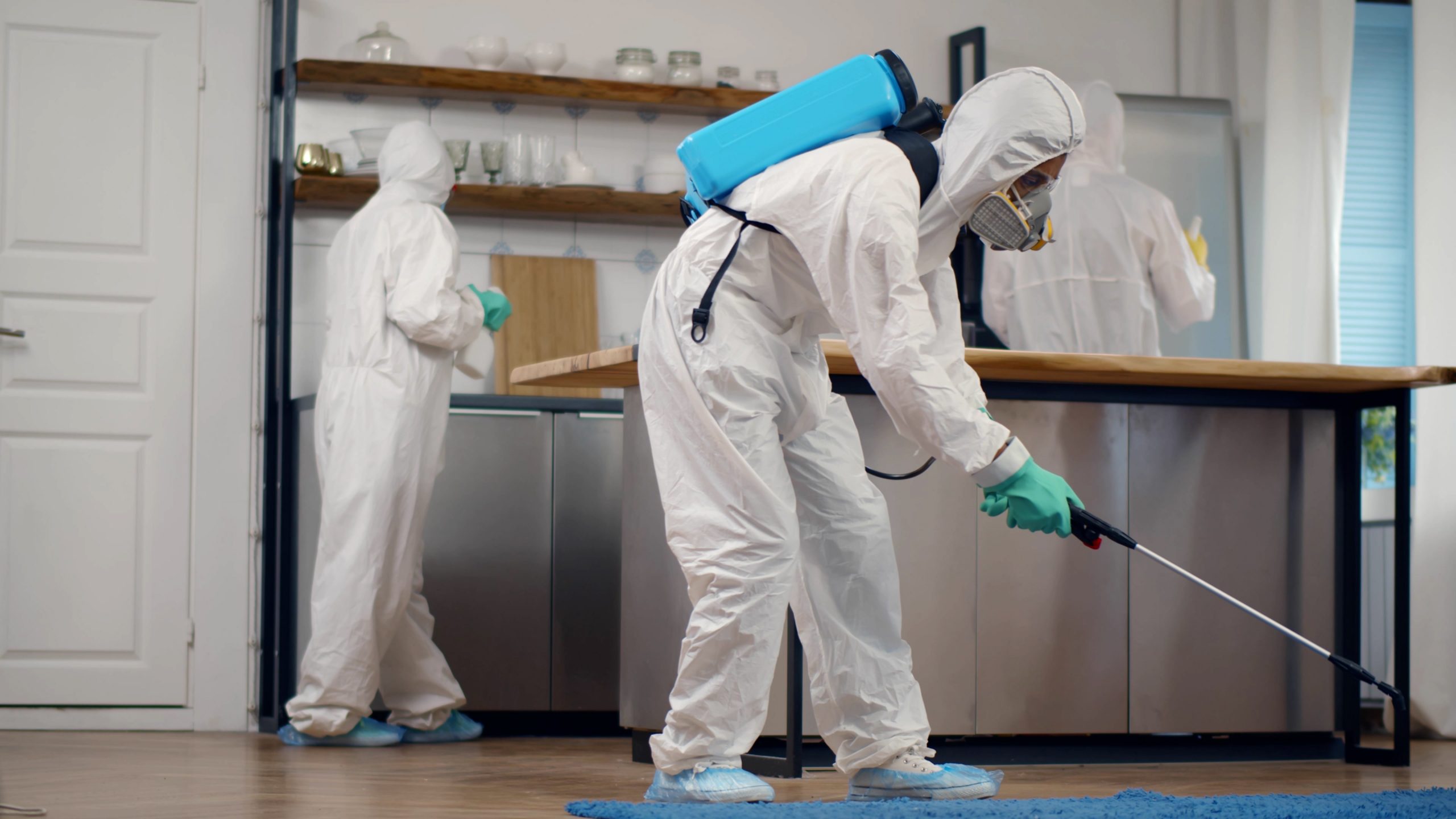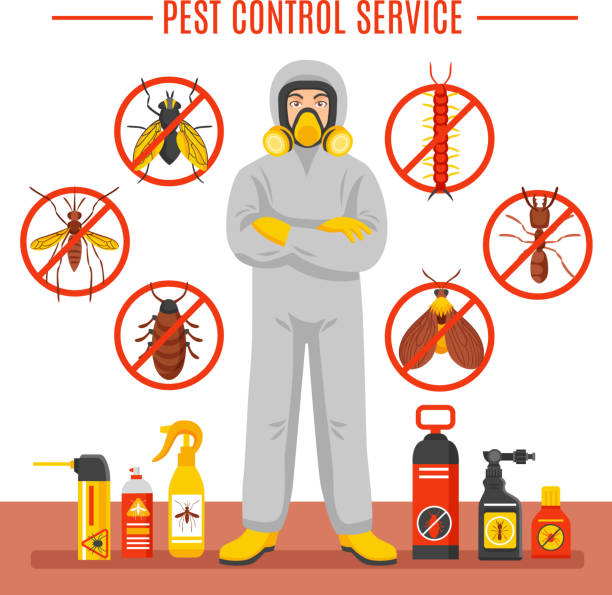Ingenious Insect Control Techniques for Safeguarding Your Residential Or Commercial Property From Wildlife
As urban locations broaden, the interaction between human habitats and wild animals ends up being progressively complex, necessitating cutting-edge bug control methods to efficiently guard building. Using sophisticated technologies such as motion-activated deterrents and thermal imaging can significantly boost tracking and response approaches. At the same time, all-natural repellents and habitat alteration offer environmentally friendly choices to standard methods. The effectiveness of these methods is frequently contingent on a deeper understanding of wild animals habits and area involvement. This complex method elevates important inquiries about lasting coexistence and the long-lasting implications of our bug control selections. What services might arise from this evolving landscape?
Recognizing Wild Animals Actions

Moreover, the social structures and territorial habits of particular species, such as raccoons or deer, can inform control strategies. By using this knowledge, pest control can be adapted to be more gentle and effective, advertising conjunction instead than elimination. Eventually, an extensive understanding of wildlife actions not just aids in minimizing bug problems however also fosters a well balanced partnership between humans and nature.
High-Tech Deterrents
The assimilation of modern deterrents into insect control strategies uses innovative remedies that build on understandings gained from wildlife habits. These advanced modern technologies take advantage of numerous techniques to develop an environment that is inhospitable to unwanted insects while minimizing damage to non-target species and the environment.
One promising method is using motion-activated devices that send out sounds or lights. These gadgets are made to imitate all-natural predators or produce disruptions that deter wildlife from getting in specific areas. For circumstances, ultrasonic repellents can disorient animals, making them much less most likely to approach homes or gardens.
In addition, thermal imaging technology enables homeowner to discover pet task before significant damage happens. By recognizing hotspots of wildlife visibility, preventative steps can be carried out purposefully. Another noteworthy development is making use of clever catches that can alert property owners when they record a pet, enabling timely and humane removal.
Furthermore, integrating these state-of-the-art options with existing parasite control techniques boosts overall effectiveness. By utilizing data analytics, homeowner can constantly keep an eye on wild animals interactions and adjust their methods as necessary, making certain an aggressive technique to pest monitoring that safeguards their buildings successfully.

All-natural Repellents
Natural repellents offer an environmentally friendly alternative to chemical pesticides, effectively discouraging insects while preserving environmental integrity. These substances, stemmed from plants, important oils, or other natural sources, can offer a sustainable solution for managing undesirable wild animals without the damaging results connected with artificial chemicals.
The application of all-natural repellents is simple, frequently requiring easy dilution with water for sprays or direct application to affected areas. Normal reapplication might be necessary, particularly after rainfall or hefty winds, to preserve efficiency.
Integrating these natural techniques right into parasite administration methods not just safeguards property yet likewise promotes biodiversity, ensuring that non-target varieties are not detrimentally impacted. Pest Control. By choosing all-natural repellents, residential or commercial property proprietors can achieve a well balanced technique to pest control that lines up with their environmental worths
Habitat Modification
Reliable habitat modification offers as a vital technique in pest control, resolving the underlying conditions that bring in unwanted parasites. By changing the environment to make it much less congenial to wild animals, homeowner can dramatically minimize the chance of invasions. This procedure includes numerous crucial practices, consisting of the removal of potential food resources, water, and shelter that pests might exploit.
One reliable approach is to keep a tidy landscape, that includes regular yard upkeep and the removal of debris such as dropped leaves, old wood, and mess. Additionally, making sure that garbage is safely saved in pest-proof containers can discourage rats and insects from foraging for food.
One more vital element of habitat alteration is the strategic placement of plants. Choosing native types that are much less attractive to insects can aid maintain a balanced ecosystem while decreasing the weblink chance of unwanted wildlife. Moreover, securing entry points around the home, such as spaces in home windows and doors, protects against pests from discovering sanctuary inside.
Inevitably, reliable environment alteration not just improves insect control efforts but also promotes a much healthier atmosphere for both building owners and regional wildlife.
Community Involvement
Community participation plays an important role in magnifying the performance of bug control efforts. Engaging neighborhood citizens promotes a sense of common obligation, encouraging individuals to get involved proactively in the prevention and monitoring of wildlife-related concerns. When neighborhoods collaborate, they can apply thorough methods that not only address instant concerns yet additionally establish long-term options.
Educational programs are essential in this context, as they educate citizens about the relevance of preserving tidy settings and the effect of human activities on regional wildlife. Workshops and educational sessions can gear up area members with beneficial understanding on best methods for pest prevention, consisting of appropriate waste disposal and habitat alteration techniques.
In addition, community-driven initiatives, such as area clean-up days or the establishment of wildlife-friendly areas, can significantly minimize parasite populations. By cultivating open communication and participation among citizens, city governments, and parasite control professionals, neighborhoods can develop tailored techniques that address certain local challenges.
Final Thought
To conclude, executing cutting-edge pest control methods is necessary for effective wildlife administration on buildings. Techniques such as making use of high-tech deterrents, natural repellents, and habitat adjustment add significantly to reducing unwanted animal communications. Fostering neighborhood involvement with education and learning and clean-up efforts improves the general performance of these approaches. By taking on a thorough approach, home owners can accomplish a balance between protecting their premises and promoting environmental consistency.
Comments on “Thorough Pest Control for 365-day protection from pests.”